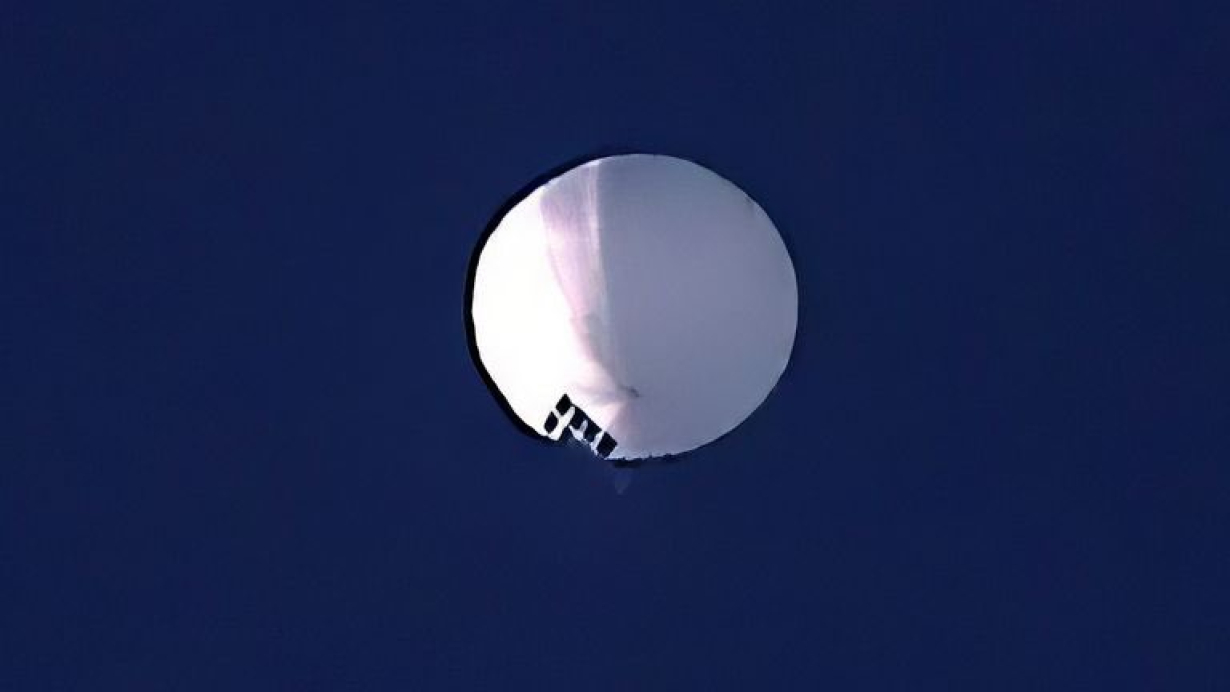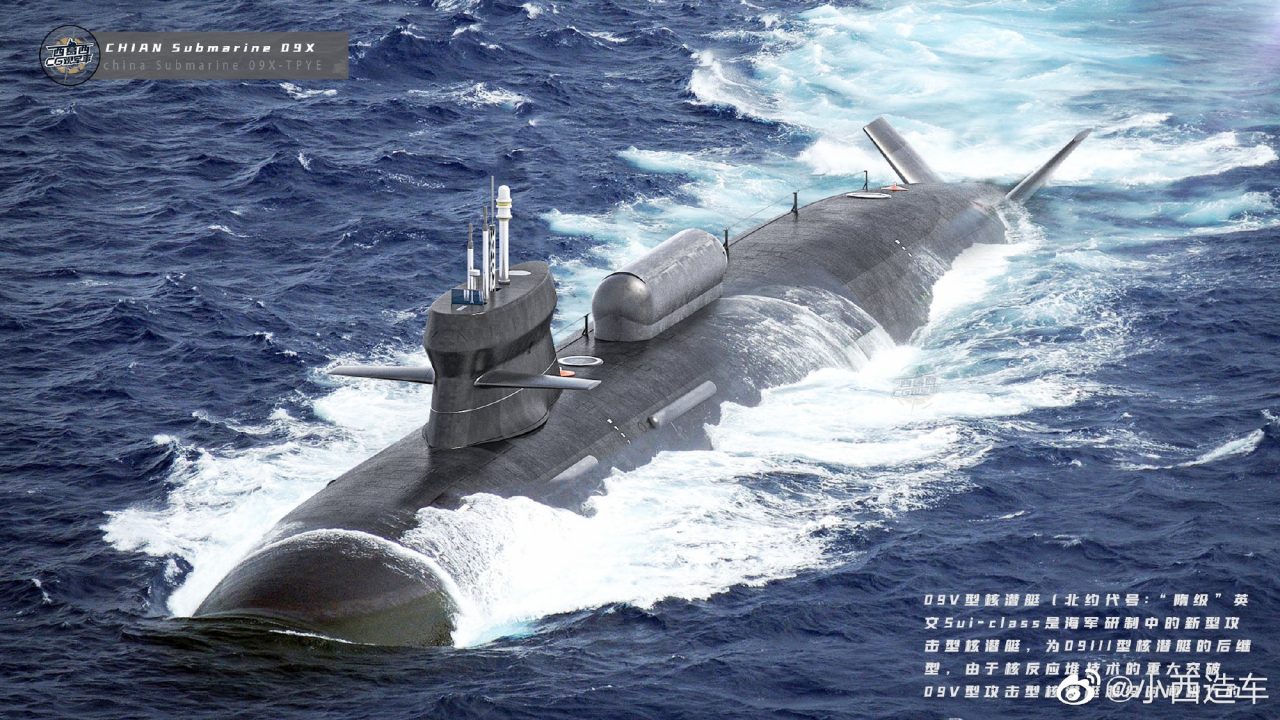A recently shared social media video attempted to show a Chinese spy balloon with a mounted oscillating camera hovering somewhere over the US.
The video, which EurAsin Times also posted to its Twitter handle, read: Another good quality, super-zoomed video of the Balloon appears clearly showing an Oscillating Camera with some laser tech, solar panels & antennas.
FAKE or REAL??
Another good quality, Super-zoomed video of the Balloon appears clearly showing an Oscillating Camera with some laser tech, solar panels & antennas. @usairforce @NORADCommand #usaf #balloon pic.twitter.com/pyfqgxtSyh
— EurAsian Times (@THEEURASIATIMES) February 15, 2023
Indian military expert, who wished to stay anonymous, told the EurAsian Times that it appears to be a completely baseless video which I think is made more for spoof than anything else.
A camera cannot capture an object approximately 60,000 feet over the ground with such clarity. Had it been real, it would have been hogging the global media limelight. But I must admit, the video is hilarious, he quipped.
The video is definitely fake, but what is real is the Chinese balloon that has ratcheted tensions between Washington and Beijing. It is believed to have been launched from the Chinese Hainan Island, popularly known as China’s Hawaii, home to multiple strategic military bases.
The US military and intelligence agencies have been monitoring the balloon since it took off from a base on the island near the southern coast of China. Some US officials have suggested that this balloon may have entered North American airspace as it veered off course, The Washington Post reported.
According to recent reports, there is speculation among US officials that the balloon could have been bound for Guam but took an unexpected northern turn and was found floating over Alaska, then Canada, and finally entering the US airspace. Relevant agencies in Washington are now investigating these preliminary assumptions.
However, this incident has also spotlighted China’s tropical Hainan Island, located near the South China Sea and hosting several thousand tourists annually. For a good reason, this island is referred to as “China’s Hawaii,” as it is home to some of China’s very strategic military bases.
Satellite pictures obtained by Planet Labs and examined by scientists at the Middlebury Institute (MIIS) revealed that a military facility is present on Hainan Island. Whether this same facility was used to launch the balloon is not specified.
The image captured mid-January showed a 140-meter launch pad with apparent launch equipment. “We believe this is the best launch site candidate on the island, especially as it has previously hosted aerostats,” Sam Lair, a researcher with MIIS, told Rolling Stone magazine.
“A perimeter security fence surrounds the facility and includes three large radomes,” the researcher said.

Hainan is located thousands of kilometers away from the United States, with the Pentagon currently unsure whether the balloon launched from this island was intended for Washington.
It is unknown if the balloon was launched from a military installation because American officials have not disclosed the precise location of the claimed balloon launch point in Hainan.
According to reports that cited unnamed US officials, China frequently sends these floating spying objects to US Pacific territories like Guam and Hawaii.
However, it is pertinent to note that the Chinese military views the island, situated on the northern boundary of the South China Sea, as having enormous strategic significance. We dive deep into why Hainan is China’s Hawaii.
China’s Hawaii
The southern edge of Hainan Island is a major People’s Liberation Army (PLA) Naval base, housing a portion of its South Sea Fleet, tucked away from the beaches and hotspots frequented by tourists and business travelers.
The Yulin naval base gives the PLA Navy access to the South China Sea’s disputed waters and the vital sea routes connecting the Asia-Pacific region with India and the Middle East. Hainan is remembered for the launch of Shandong, China’s second carrier and its first to be built indigenously.
The complex is also home to attack submarines and ballistic missiles with nuclear propulsion that are part of China’s expanding underwater fleet and have been flagged as a significant threat by the United States. Satellite images have previously revealed that Type 094, or Jin-class, nuclear-powered ballistic missile subs and Type 093, or Shang-class, often dock here.
Yulin Naval Base, Hainan, #China is home to a large underground facility with covered tram from magazine to loading areas pic.twitter.com/cIv9MPC0cy
— Sentinel (@StratSentinel) February 18, 2017
The naval base is one of the most strategic bases in all of China, based primarily on the current nuclear submarine traffic flowing in and out of Yulin’s underground docking facilities that have been a talking point since 2017. The Yulin base also reportedly has a submarine cavern tunneled into the side of a mountain.
Hainan has bases for PLA fixed-wing aircraft and helicopters.
In 2022, satellite imagery revealed that new construction was taking place on the facility, including two new piers on top of the existing four that the base currently has. At the time, it was also revealed that a new dry dock to house an aircraft carrier and a surface combatant was also being developed.
#Yalong Submarine Base,Sanya (Hainan Island). Construction activity in progress for creation of additional berths.PLAN likely to position more SSBNs/SSNs in future.Present disposition between Five to Six on an average i.e. 04 (Type 094) & 02 (Type 093).@Moochikal pic.twitter.com/JDPRKsrK9c
— viekass d (@d_viekass) May 27, 2022
Not just that, a helicopter base in the adjacent city of Sanya had been renovated with new hangars, an extended parking apron, and repaired runways which signals the increasing importance of this region in case the military decides to go for combat.
Most of the PLAN’s expanding amphibious assault fleet is reportedly assigned to the South Sea Fleet, along with the first Type 075 helicopter carrier and most of its Type 071 landing platform docks. These vessels, which can carry troops by helicopters or landing boats, would be an essential part of any Chinese invasion of Taiwan.

In addition, China reportedly began constructing new electronic warfare, communications, and intelligence collecting facilities in Hainan in late 2021, according to research by the Center for Strategic and International Studies.
An in-depth analysis by The Diplomat published in 2017 suggested that degaussing and weapons-loading facilities, administrative structures, ammunition transportation systems, and geological fortifications appear to be operationally ready. Theater and point defense assets have also been deployed.
The island of Hainan is remarkably well protected. Security on the island is of utmost importance, as evidenced in a private interview where an analyst said that the Chinese were highly concerned about [Hainan].
According to military experts, China’s South China Sea strategic objectives are perfectly complemented by Yulin. Anti-Access/Area-Denial (A2/AD) systems are housed on artificial islands dotted across the Sea to prevent or postpone American attempts to encroach on China’s area of influence.

By arming Yulin with attack submarines and carrier strike groups, it is possible to project power in a way tailored against the parties with competing claims to the South China Sea. This also becomes imperative owing to the increased US presence in the region, which is only set for further expansion after the new deal signed with the Philippines.
Hainan also hosts the Wenchang Space Launch Site on the island’s northeastern tip. The Wenchang launch location was chosen because of its low latitude, which enables the launch of China’s new space station, the Tiangong.
The new assessment suggesting Hainan is the preferred launch pad for spying drones has only brought the spotlight back on an island that has continued to grow in importance for the expanding People’s Liberation Army.
- Contact the author at sakshi.tiwari9555 (at) gmail.com
- Follow EurAsian Times on Google News




